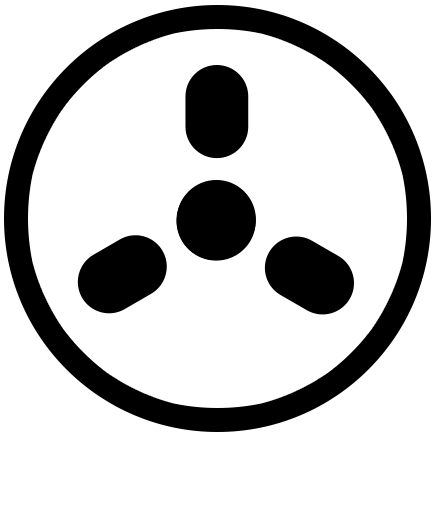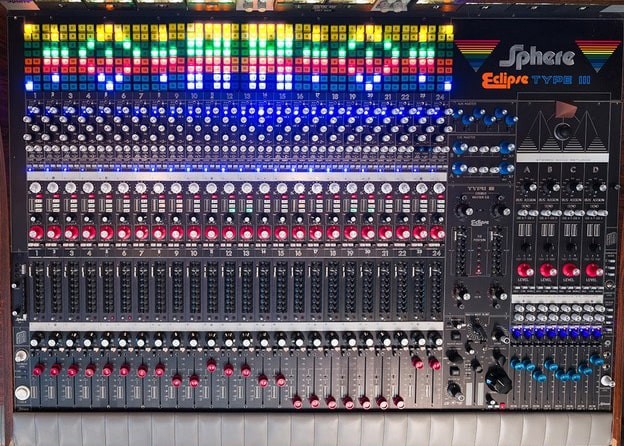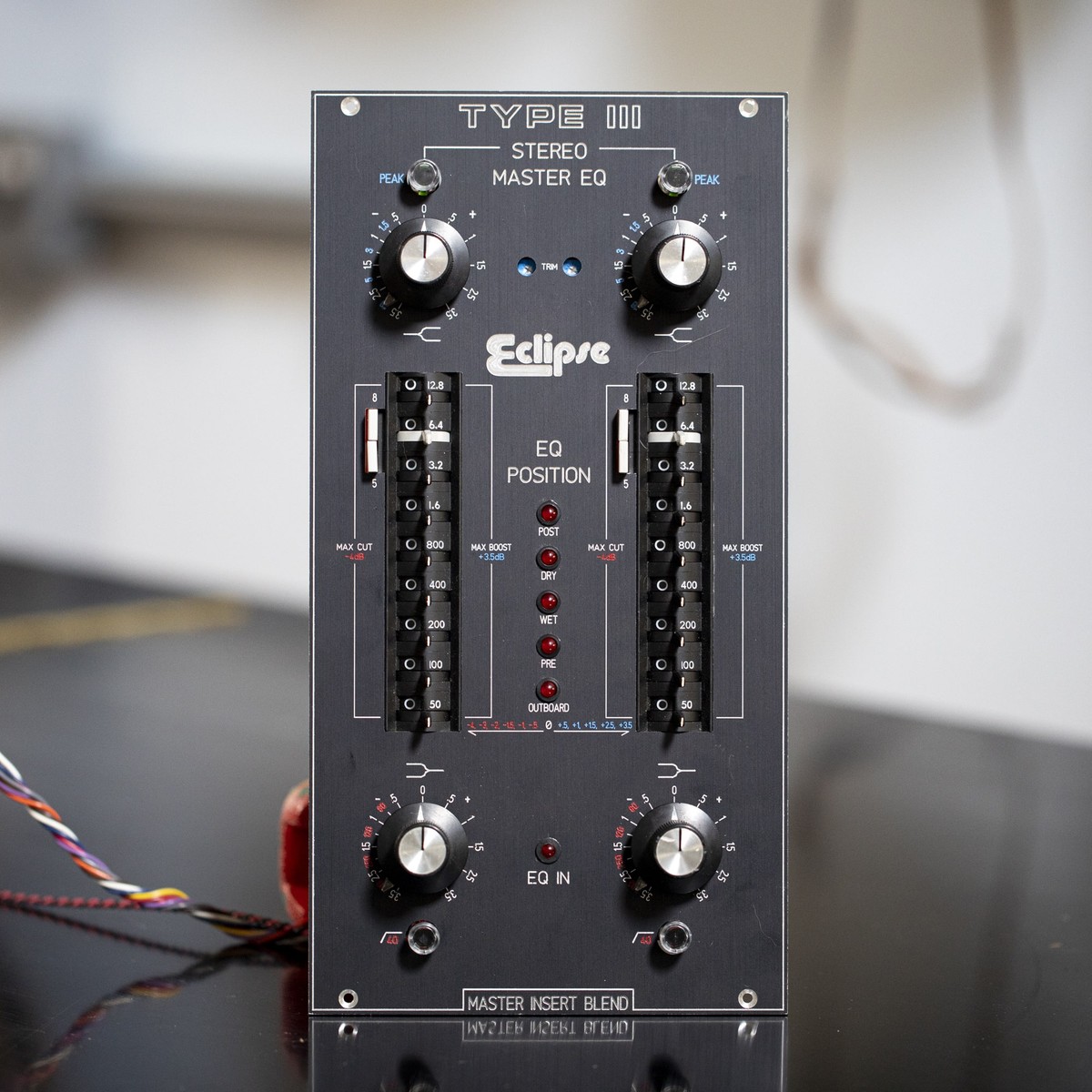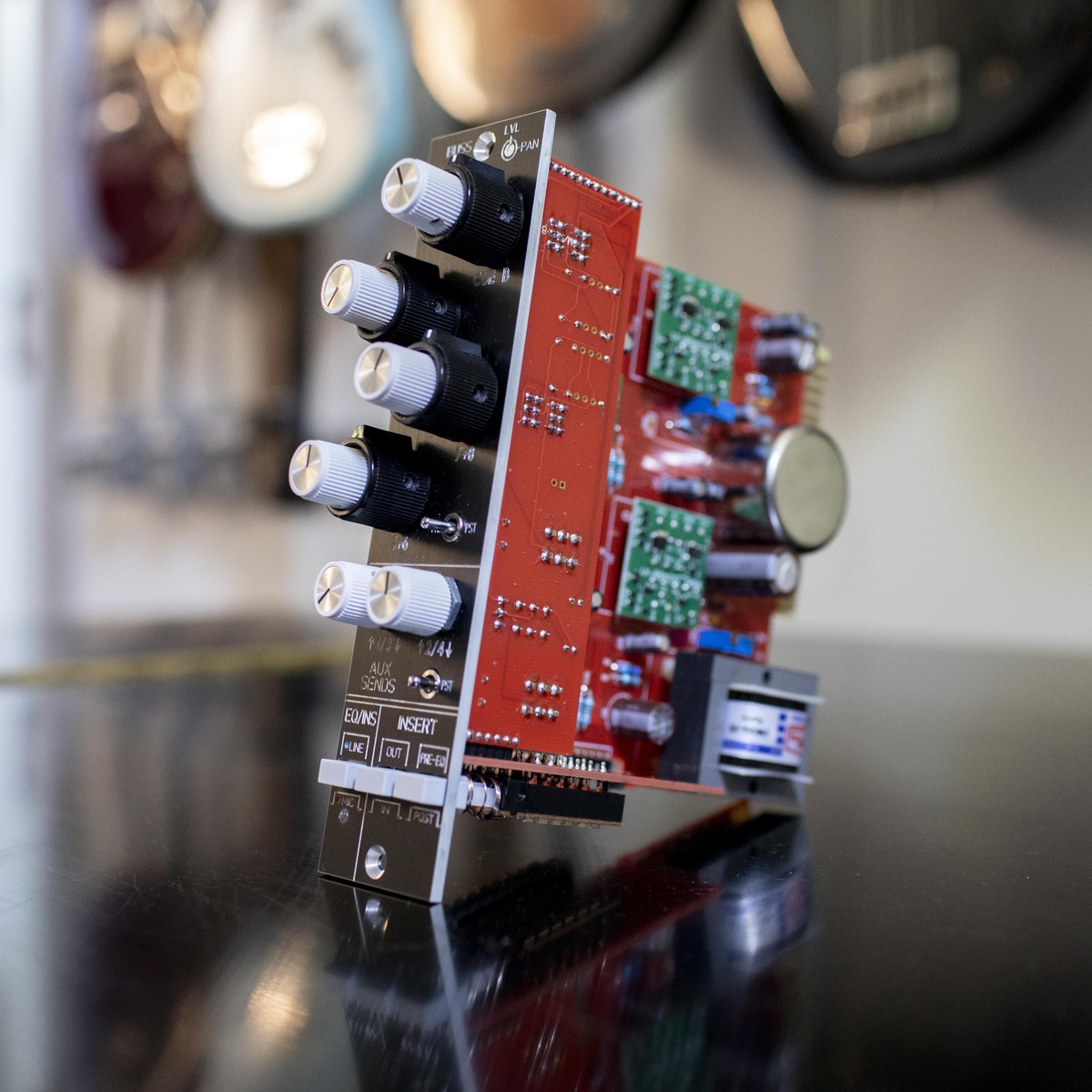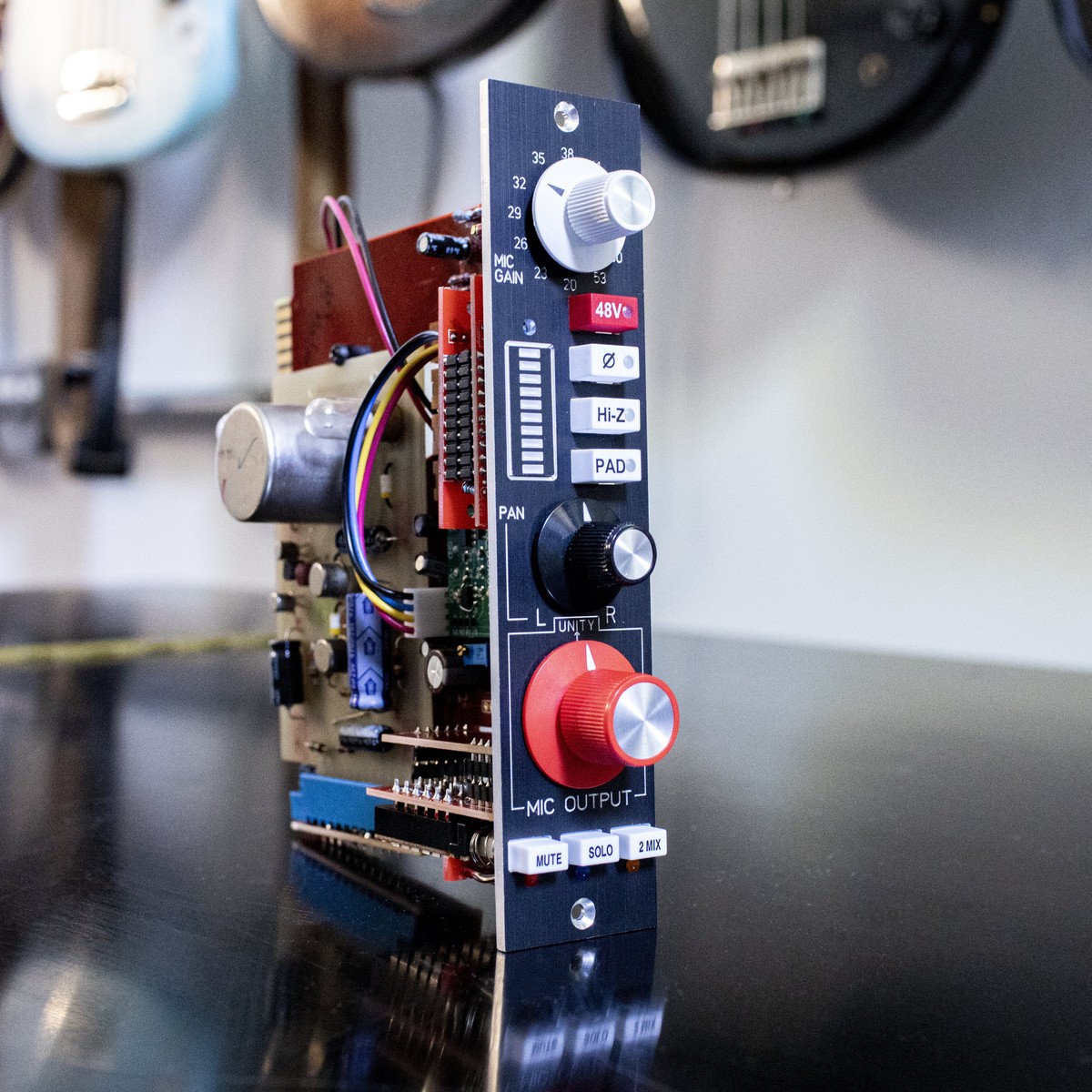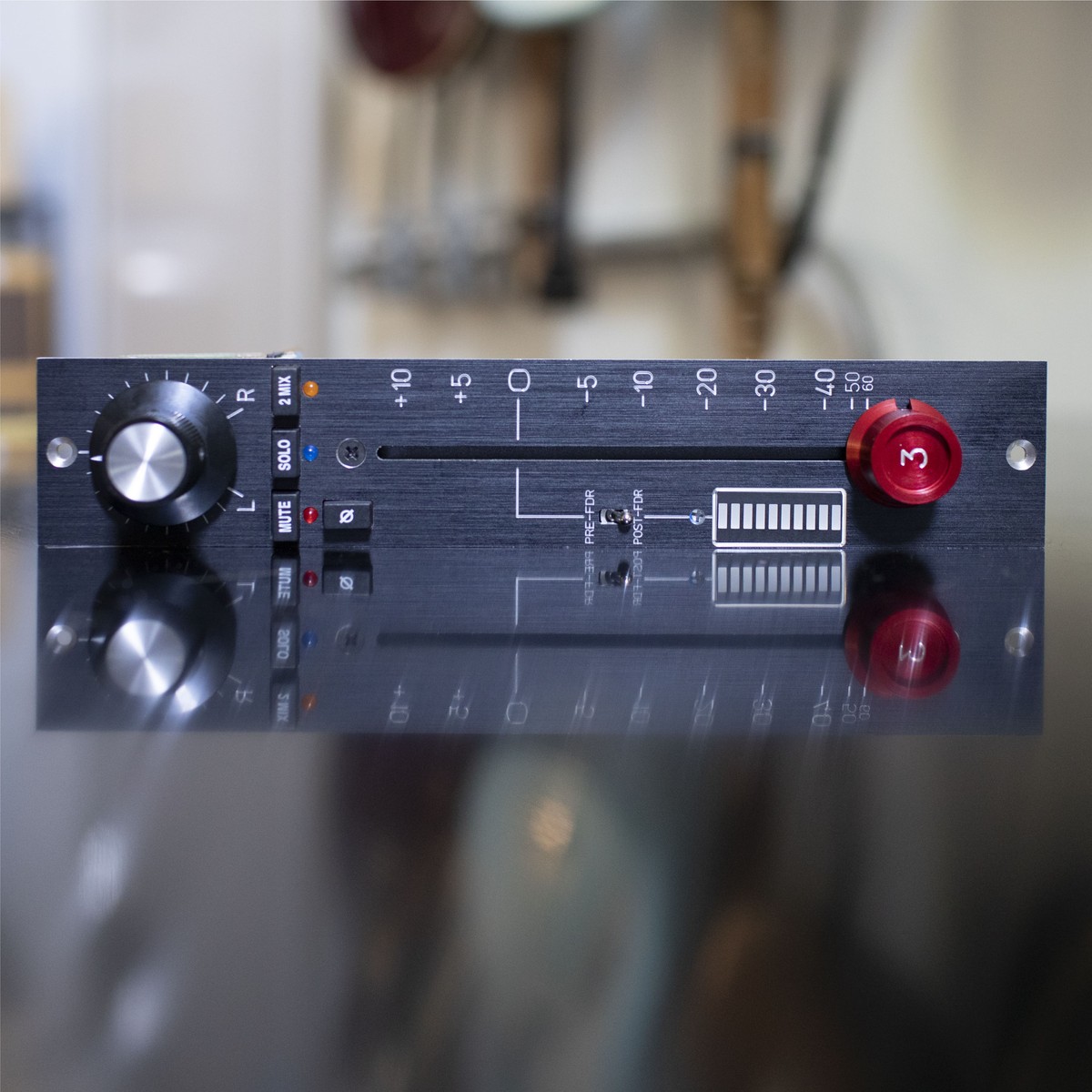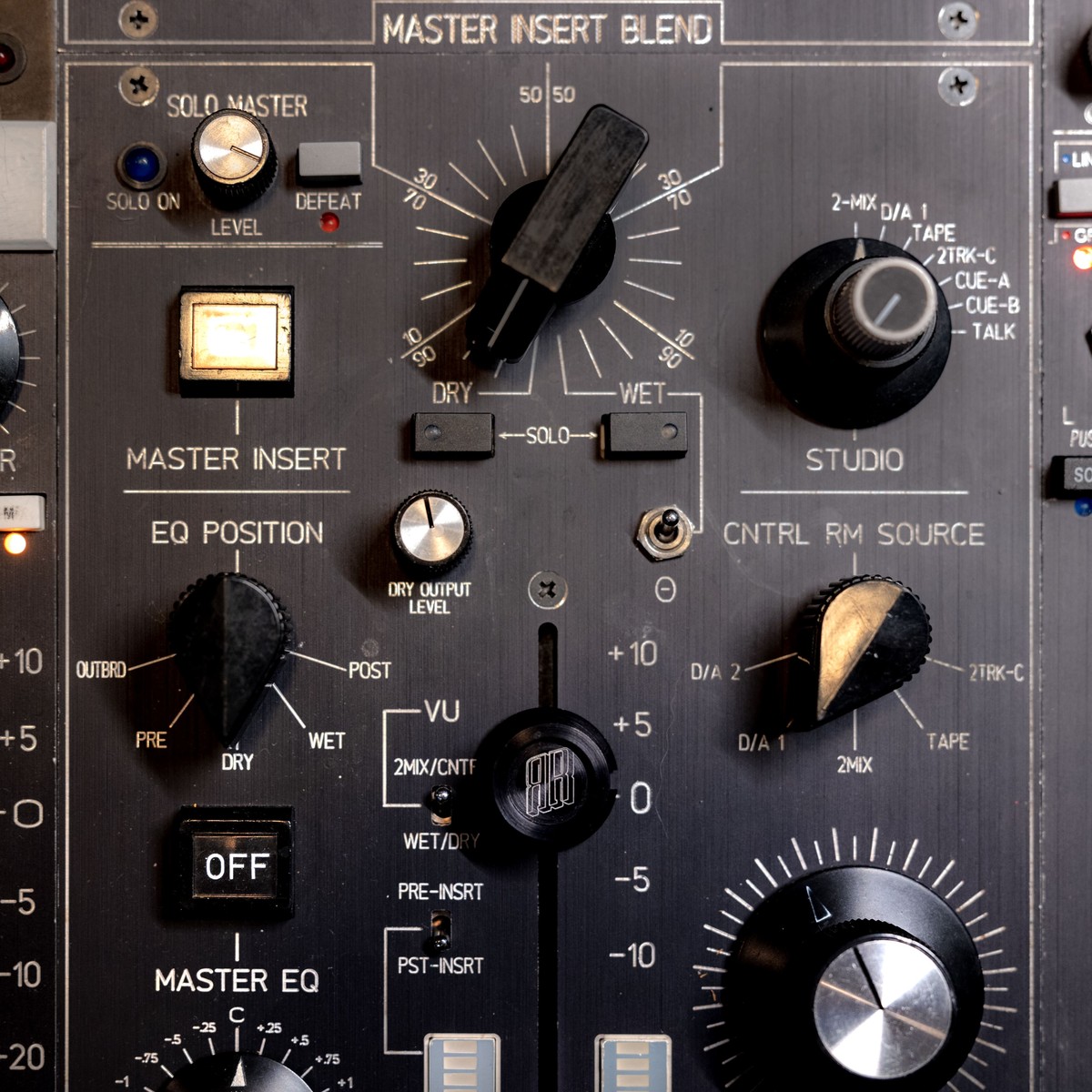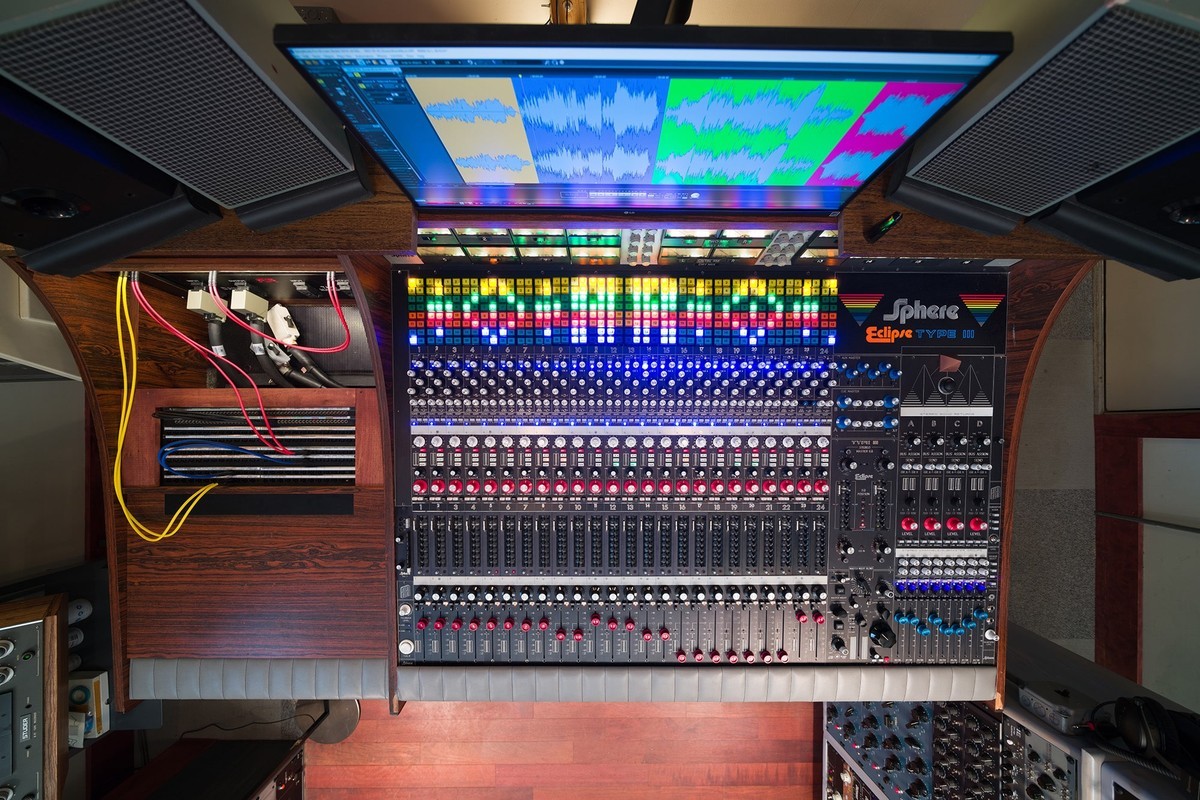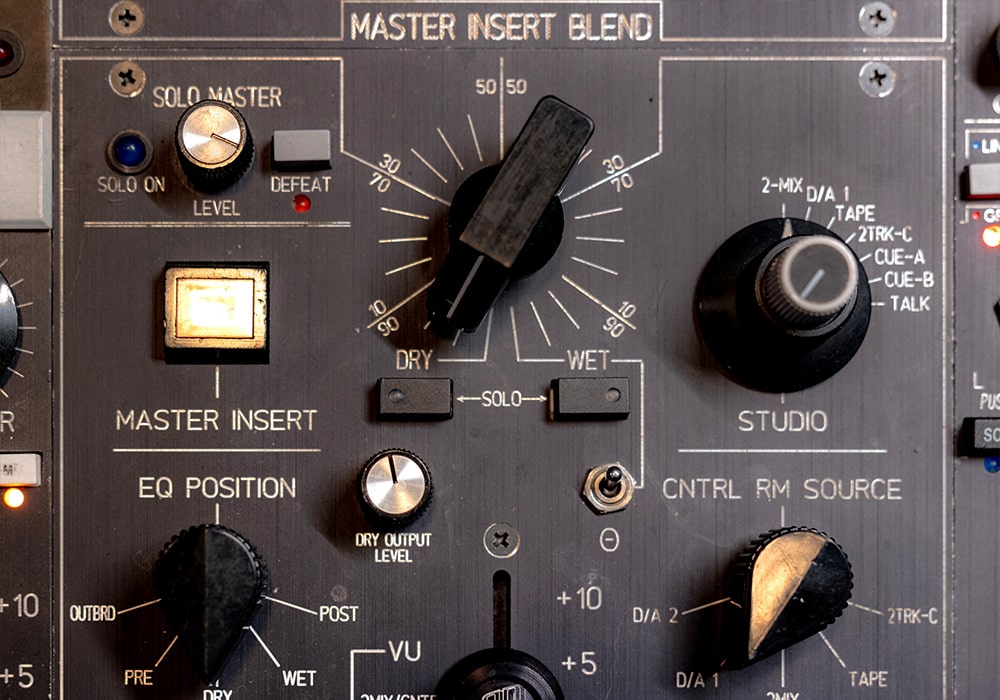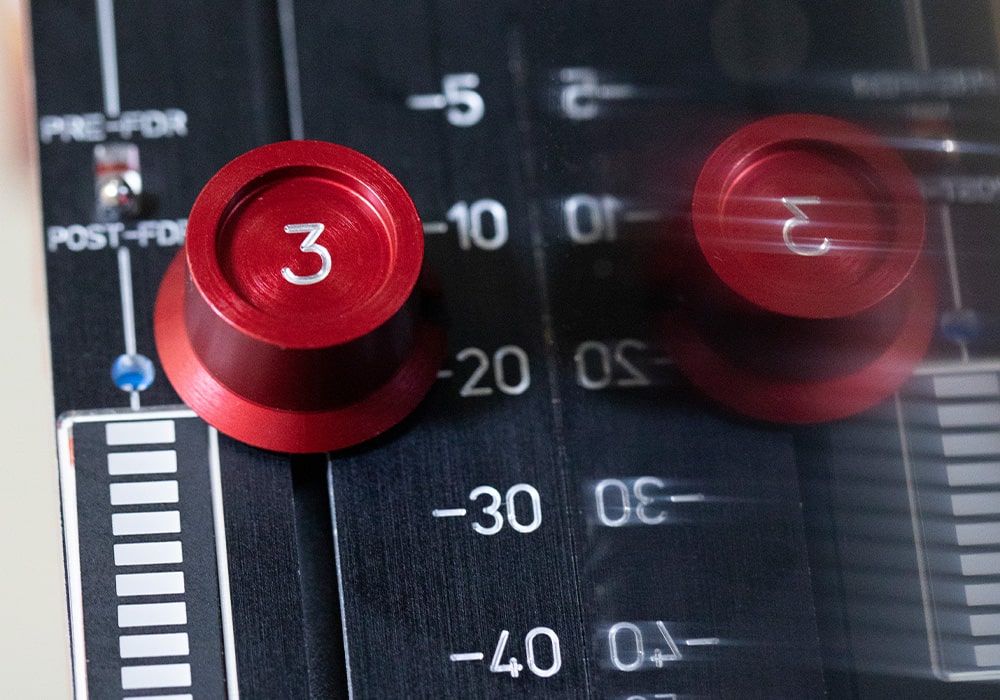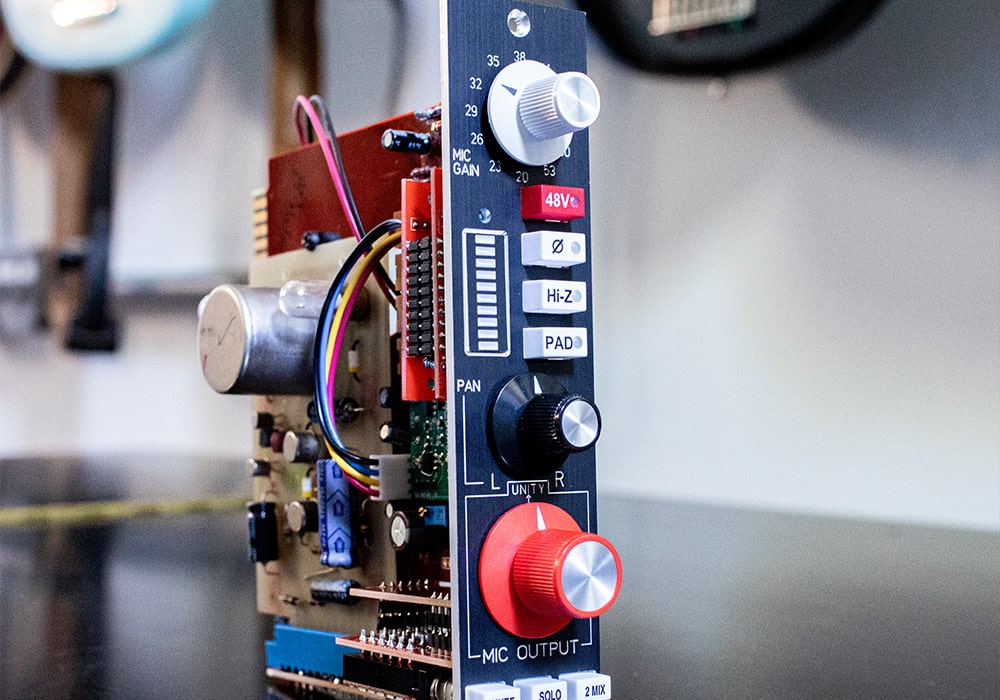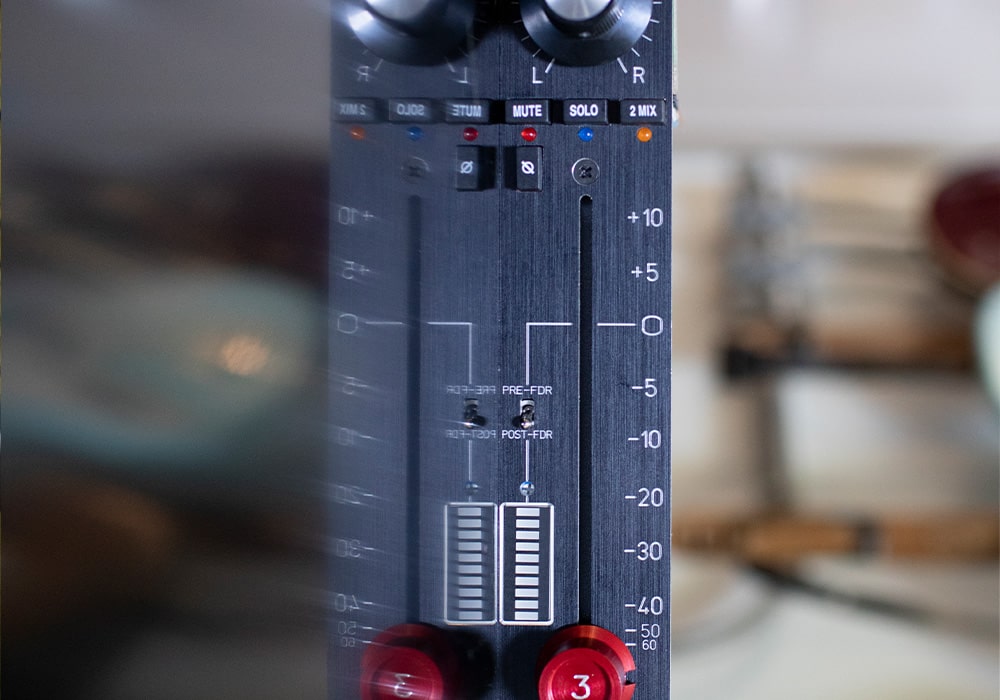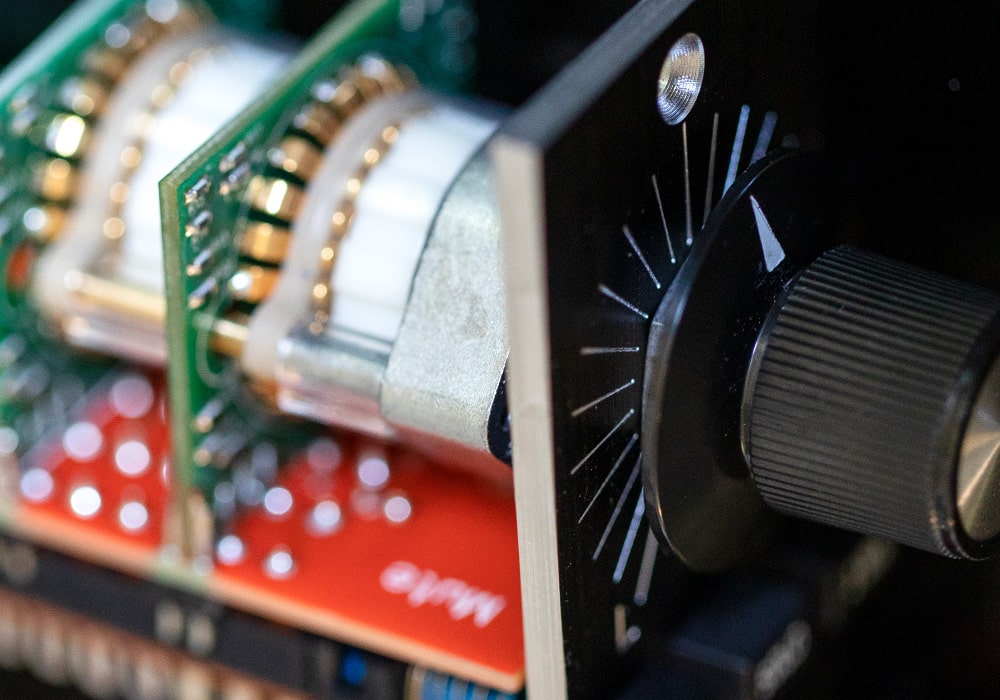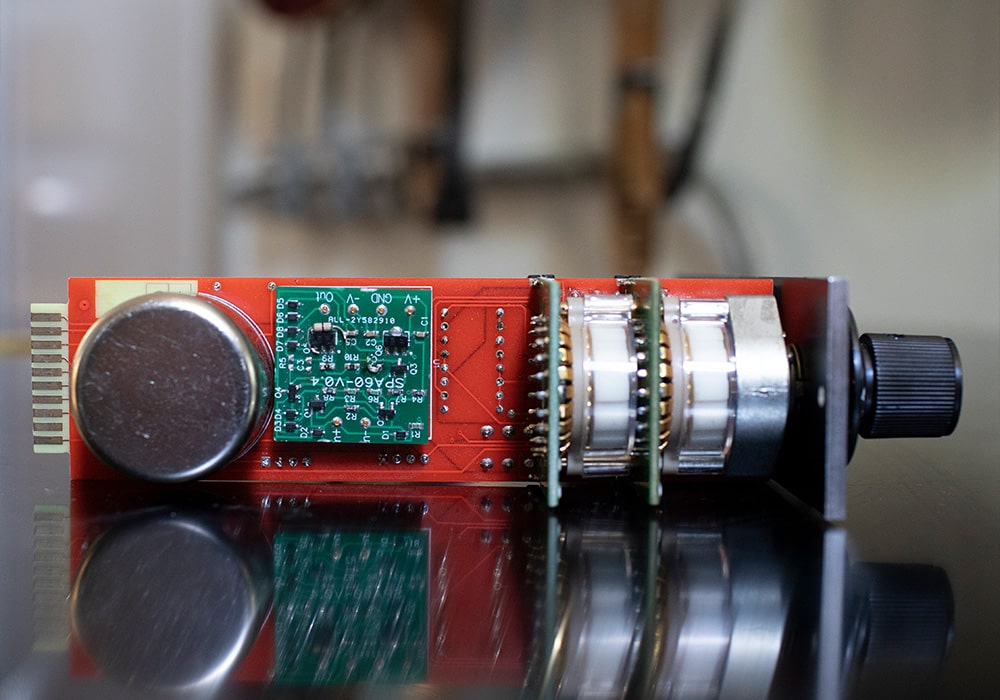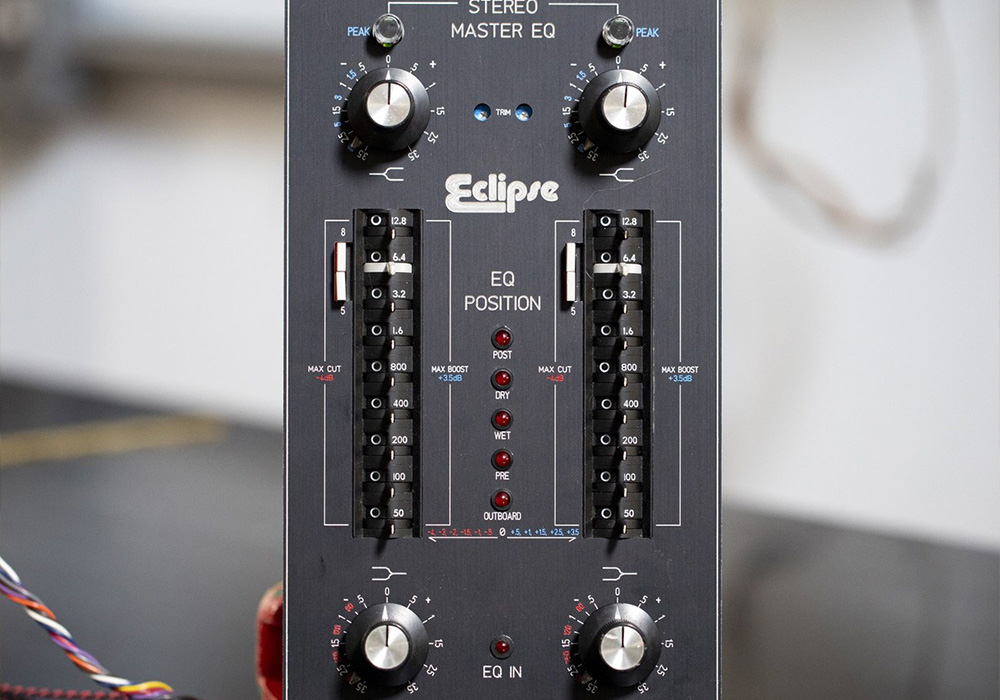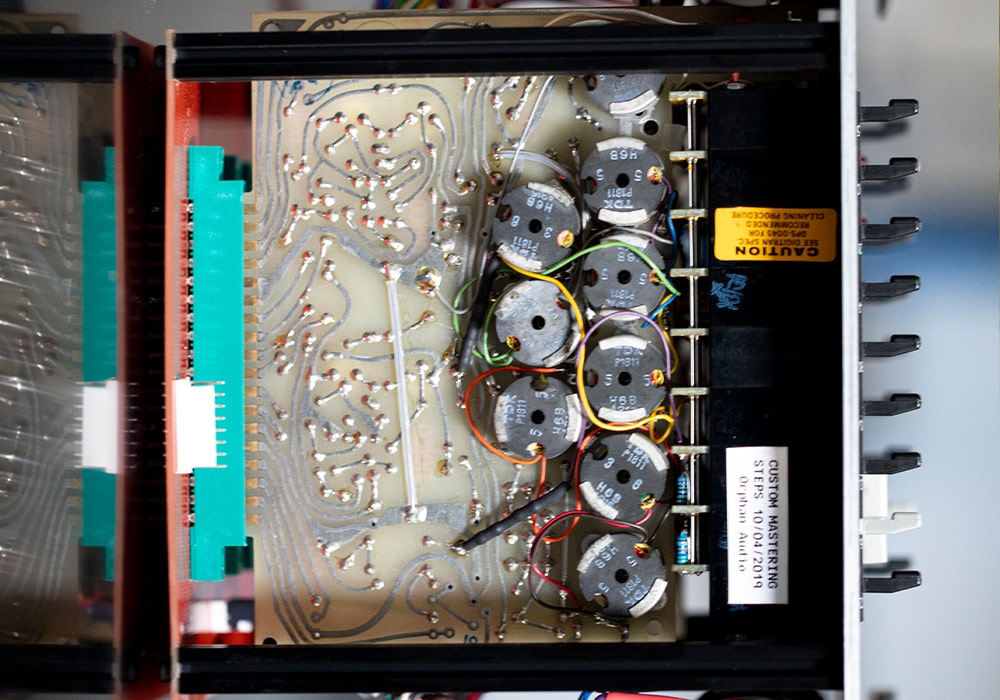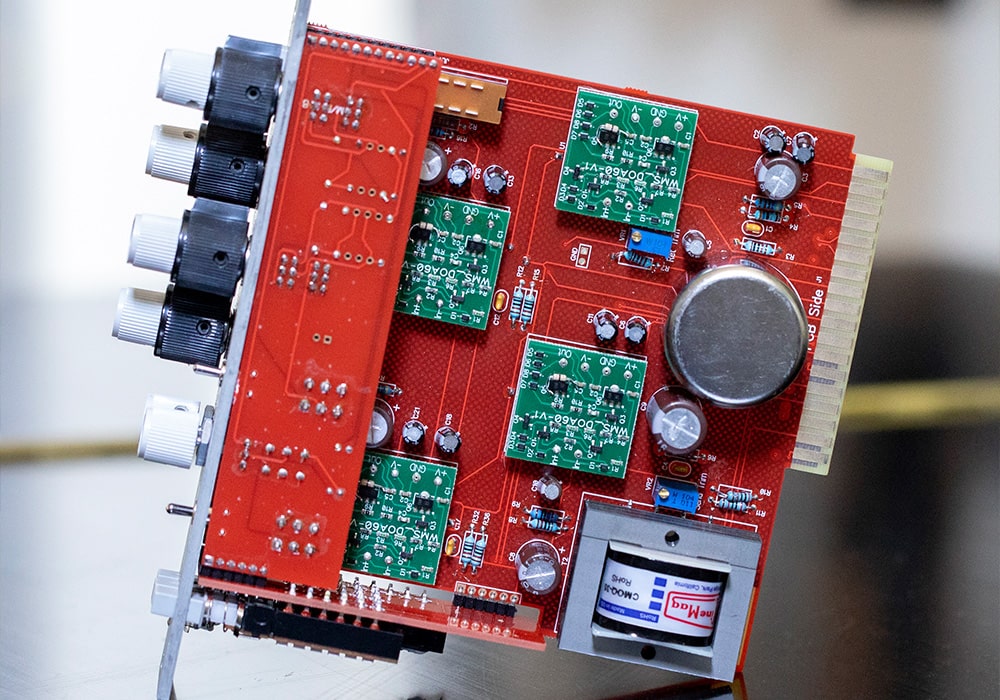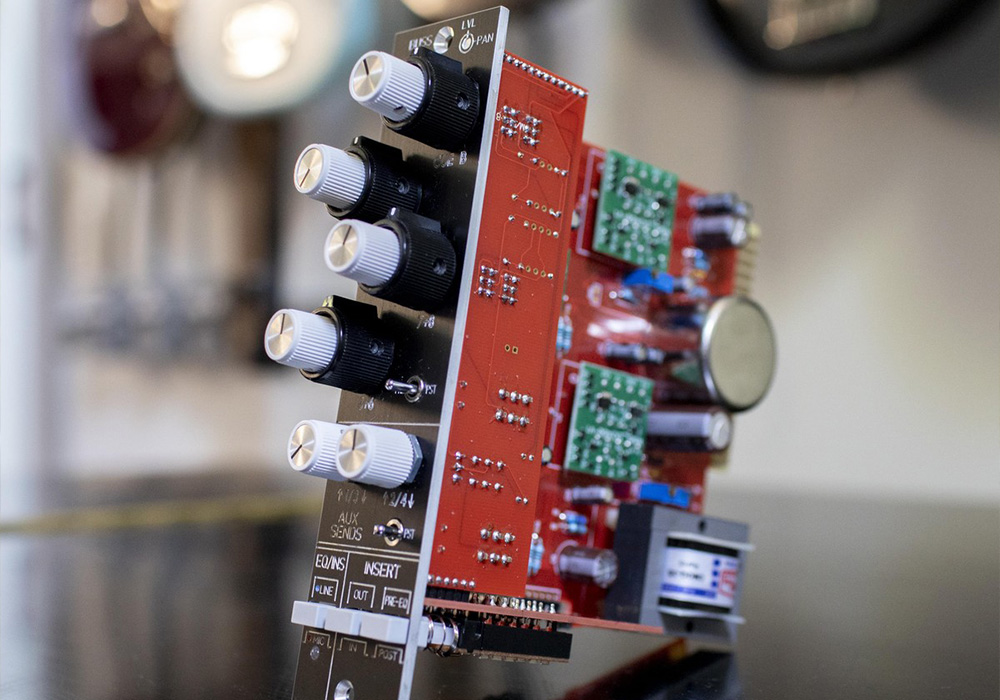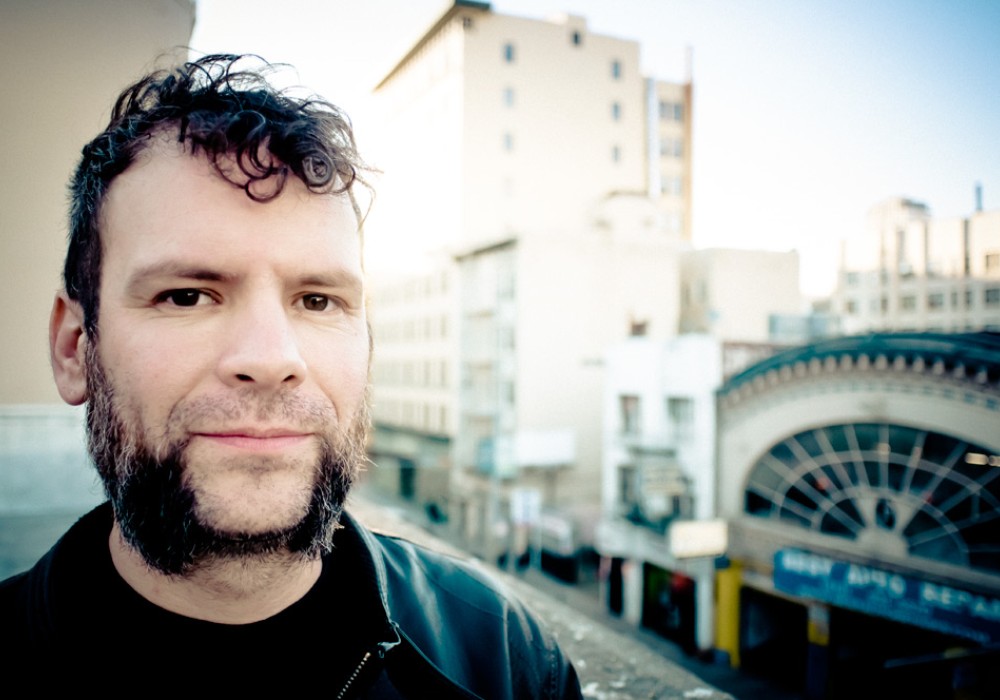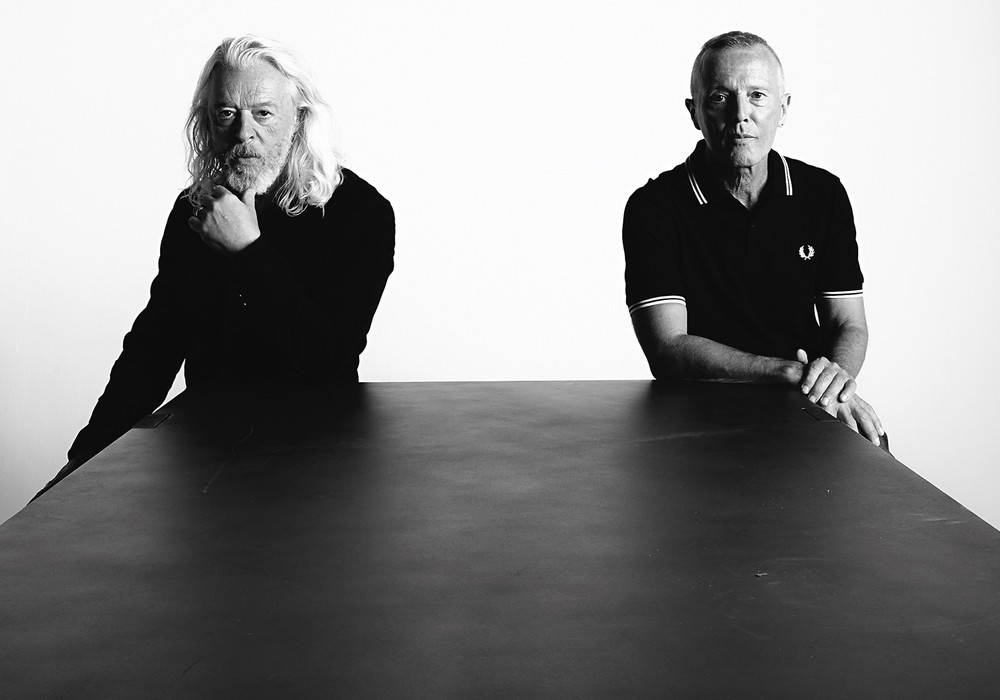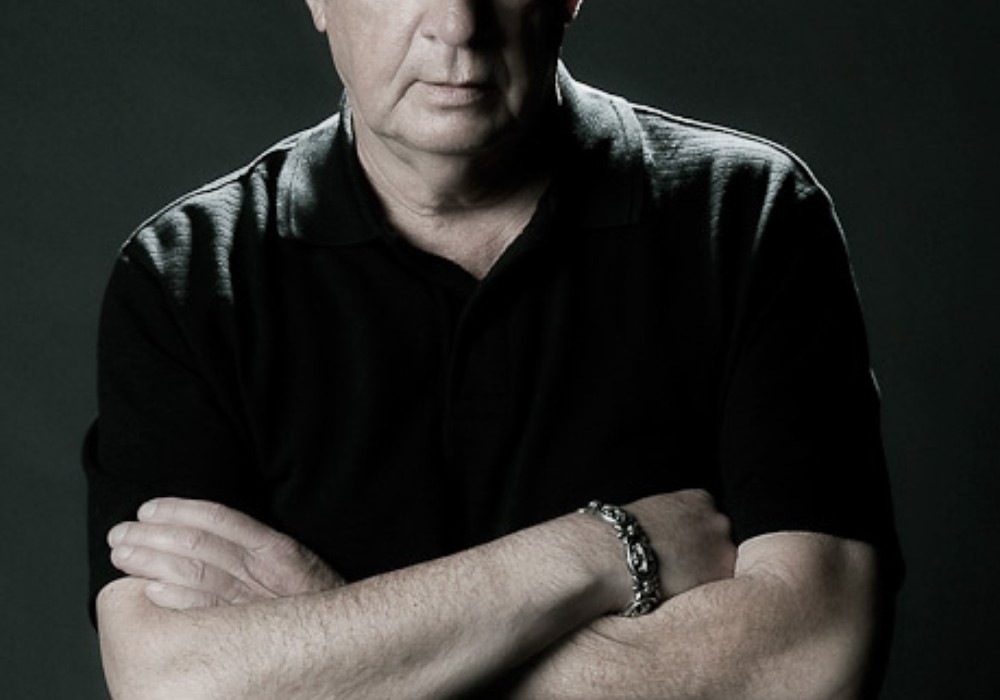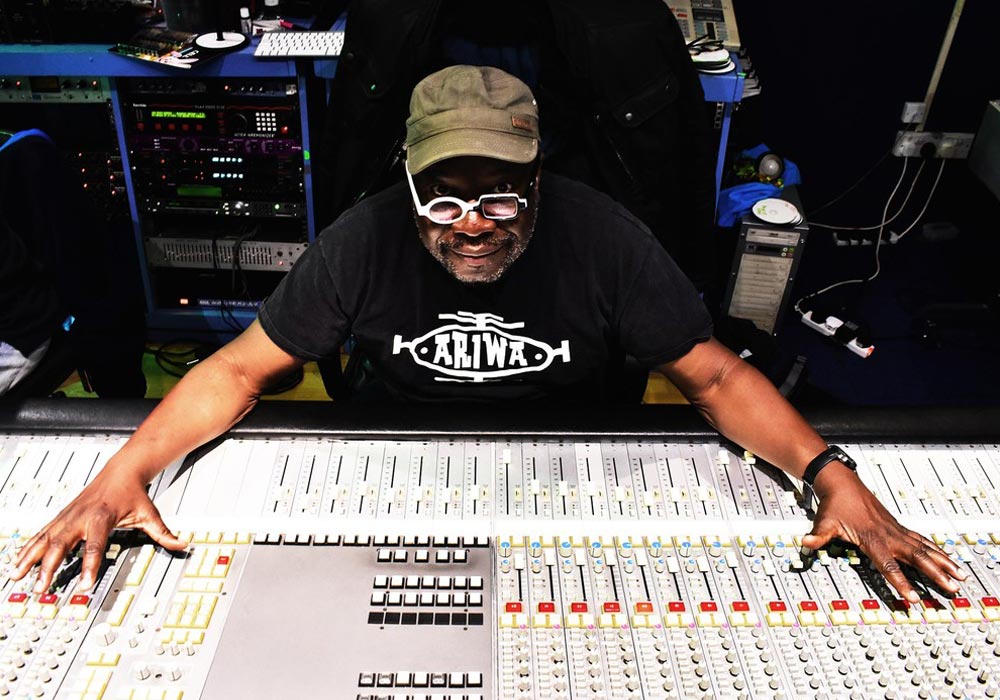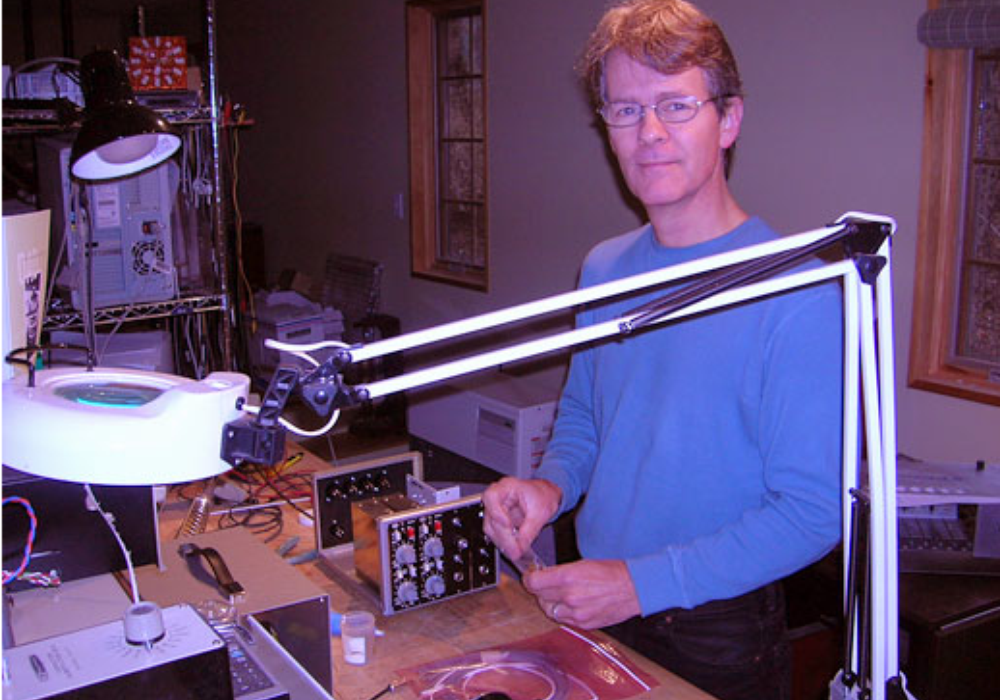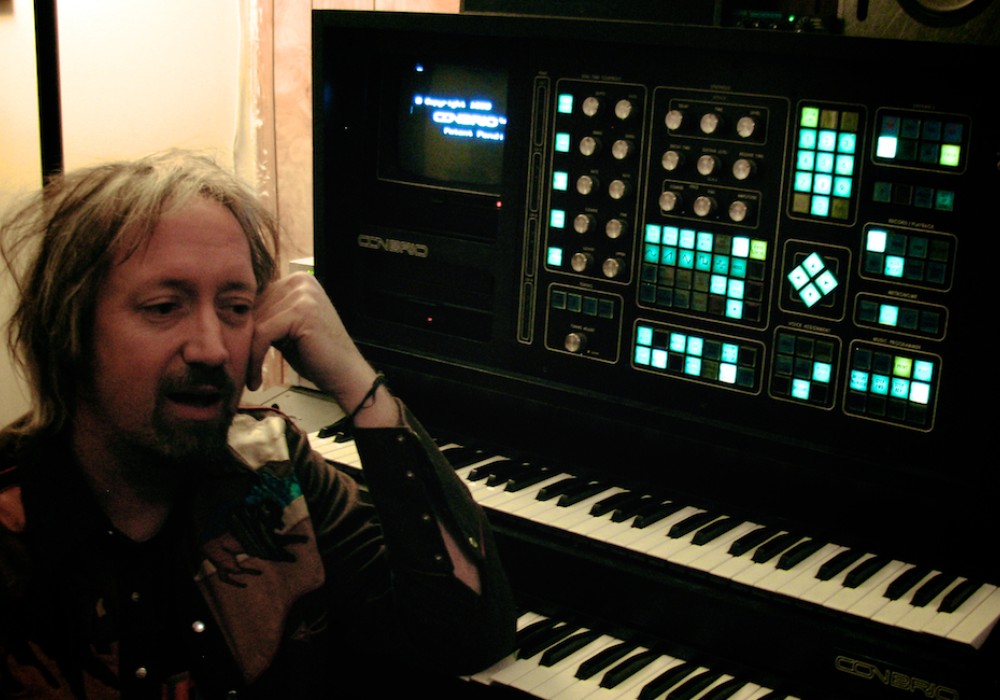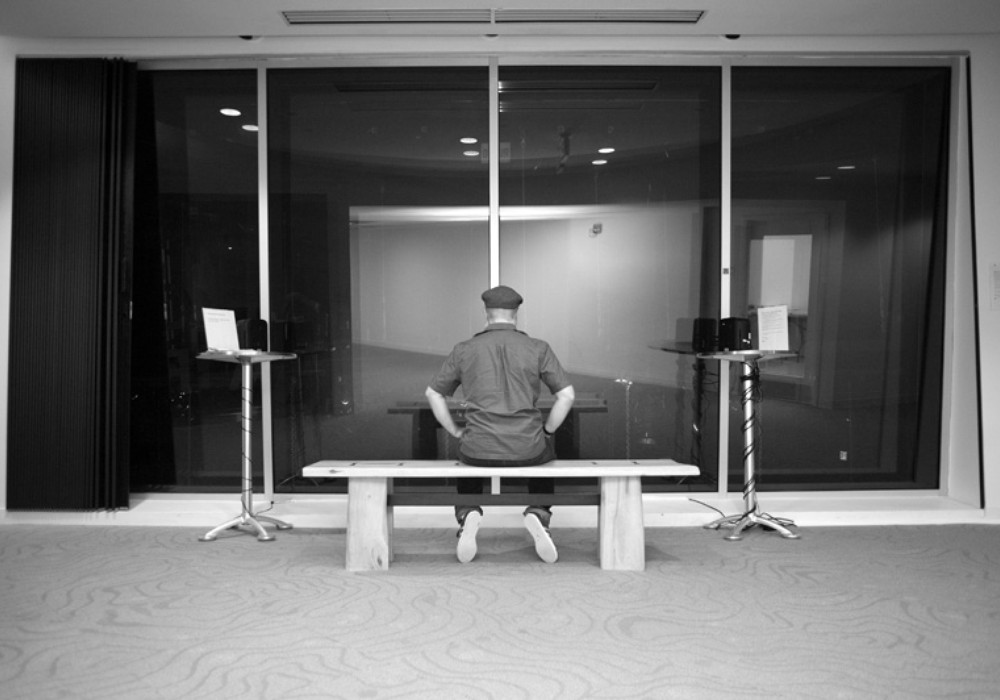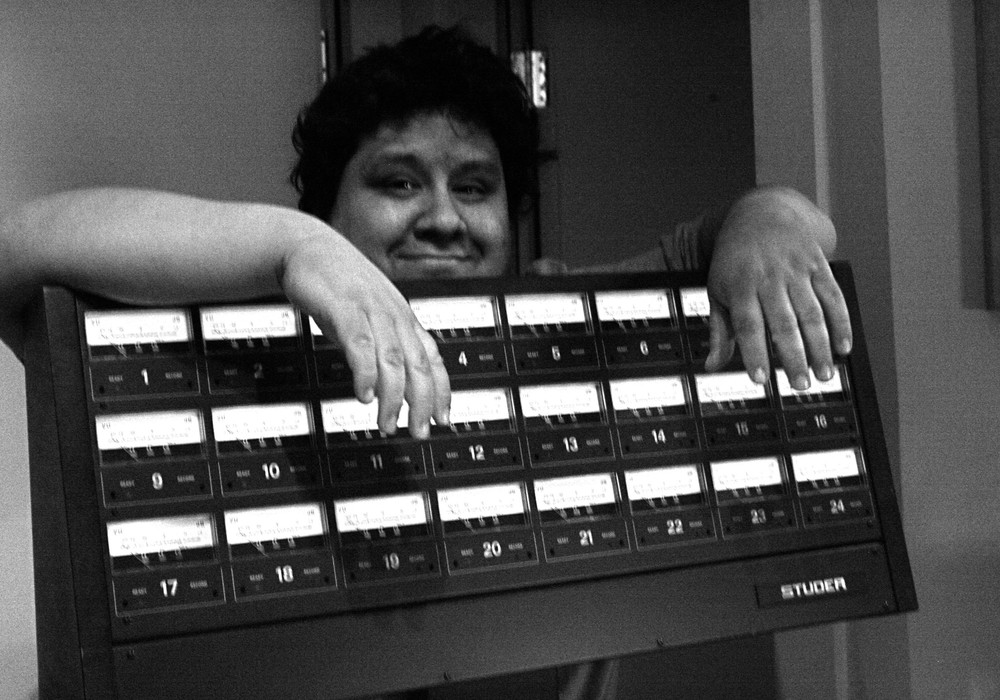How did you end up with a Sphere console?
This console came from Nashville to Echo Park’s Studio B here in Bloomington in the '90s. Echo Park was the big pro studio here when I came to Bloomington for college. They closed its doors for good about nine years ago.
Yeah, very well known.
It was owned by Mike Wanchic [John Mellencamp's guitarist], and Mark Hood [MX-80 Sound, John Scofield, Mellencamp]. When I was a first-year IU [Indiana University Bloomington] audio engineering student in '99, we took a tour and I saw the Sphere for the first time and was completely mesmerized. Eleven years later, in 2010, Mark was closing the B Room and was selling the Sphere. I had a month of unbooked studio time, so I bought the console and called Greg Norman [Tape Op #87] from Electrical Audio to come in and commission the desk.
He's awesome!
He is! He's coming back next week to do some tech work. The biggest challenge of installing the desk was getting it into the studio. In fact, we have a window in our control room thanks to that console. The console’s frame is one huge piece, so it wouldn't fit through the doors. We had to remove the entire exterior facing wall of the control room, and the movers backed the truck right up to the floor. My buddy, Pete Schreiner, who built the studio with me in the summer of 2008 in between his Magnolia Electric Company tours, tore down the wall that morning, and as soon as the console was loaded in he put up a brand-new exterior wall and added a glass block window while he was at it – all in one day!
That's insane.
Yeah. If I did it now, I'd put two double doors there and hide them behind drywall.
Did you install the Sphere and get it up and running as it was?
Yeah. And it worked, surprisingly. But it had seen a lot of modifications over the years before I got it. I’m fairly certain it’s the first console Sphere made after Electrodyne closed shop. In fact, the console’s internal wiring was all labeled “Electrodyne.” The console was commissioned by Bob Beckham for his publishing house, Combine Music; they were responsible for writing a ton of country hits in the '70s and early '80s. This was the console in his writer’s studio, so no hits were recorded on it, but hundreds of hits were written and demoed on it. There were less than 60 Sphere consoles ever made, and most of them were parted out later on. Based on my research, I discovered that before the Eclipse Type A consoles, Sphere made a Type I and a Type II. Ours was the only Type II they ever made. I think approximately five Type I consoles were made, and they look a lot like our Type II except they are shallower and more than twice as wide. The Type I and II were designed right before the in-line console concept became the standard, so on the Type II, the whole left section is tape returns and EQs, and the whole right section is mic preamps, sends, and such. Honestly, at least for today's modern studio, the Type I is a pain in the ass because they take up too much room and are hard to navigate. Also, the Type I and II came with Sphere’s proprietary Mix Log, an early mix recall system that used a series of tones that would be sent from the board to the head of your multitrack tape on mixdown, going through hundreds of relays. Then you would play those tones back through the console during your next mixing session and set all of the levels on each channel to read zero on the meters to recall your previous mix settings. It was a total electronic and maintenance nightmare, and it would fall out of calibration, add noise to the desk, and took hours to set up. You might as well just start a new mix at that point! The Mix Log circuitry was all removed by Mike Stucker when he was the tech for Echo Park. When I got the desk, it still had the huge Mix Log panel. I had no idea what that was until I started digging into the history. Anyway, after Greg and I spent a week installing the desk it was working well enough to do sessions. I then recapped every module. These old boards are awesome because everything's modular, which makes them really easy to work on.
You can always see the parts clearly.
It seems so intimidating when you don't know anything about these giant desks, but then you crack it open and you’re like, "Oh, there's the mic preamp card, there's an EQ module, output amp cards, and summing amps.” That’s it. But the control room monitor board was a breadboarded, point-to-point nightmare. It was insane looking, and it was intermittent. Despite my tech’s recommendation to leave it alone, I decided to recap it anyway, and surprisingly it worked. In 2012, we did a substantial round of modifications with Mike Stucker, who had first commissioned and modified the desk as Echo Park’s tech in the early '90s. In 1999 he became a professor at the IU Audio Department – I was actually in his first class – and now he’s the department chair of the IU Audio Engineering and Sound Production program at Jacobs School of Music. The Sphere had a lot of sentimental value for Mike since it was his first big console project, so he donated about 40 hours of his time when I bought it. We moved the pan pots, which were at the very back by the bus assignments, up to the front above the faders. Any time I wanted to pan anything I had to reach across the whole desk, and the speakers were behind my head. I couldn't even tell where I was panning to! We also added quasi-in-line functionality to the desk with fader flip and some other features. That project took longer than expected and had some gremlins because he was working with the existing wiring and electronics, which had already been messed with many times over the years. I still had all these other modifications I wanted to do that we’d talked about for years, including building outboard preamps with all these original spare Sphere m1200b preamp cards and SPA50 output cards I had. So, Stucker and I built and racked these nice, over-the-top four channel Sphere preamps, essentially recreating the signal path of a channel strip from the console, but we added all the features I wished the console had. The console’s original design had the mic preamp at max gain, fully open, and there was one button to take the gain down -15 dB, and a second button that was a -30 dB input pad. That’s all.
That’s it? No input knob?
No, but there's an output gain control. If you're clipping the input, you have the -15 dB gain option. And if it's still too hot, you have the -30 dB pad, and then you can control your level to tape using the output gain.
There's not much wiggle room there.
No, but you learn a lot about gain structure working on a preamp like that! For the outboard preamps we designed, we added a 12-step input gain switch, polarity flip, 12-segment LED meters, a switch to tap a secondary impedance winding on the original mic input transformers (that had never been utilized in the console), and more. It was like, "Wow, this is how the console preamps should be.” When the Sphere was still at Combine Music, Fred Hill, who’s a famous Nashville tech, had worked on the console at some point in the IC era, and he added all these NE5044 op-amp chips as summing amps and actively balanced the line inputs. It sounded fine, but it lacked headroom. The original console was entirely discrete, with each active stage using John Hall’s brilliant SPA50/60 op-amp, which is the true sound of the Sphere console and has tons of headroom. I had all of the original documents for our desk and brought them with me when I visited Ken Hirsch from Electrodyne, Quad 8, and Orphan Audio [Tape Op #74]. We dug through the schematics, and he solved all these mysteries about the console’s past. He's like, "Well, your board should have this and this. All this other stuff isn’t original." The original console didn't have phantom power or polarity switches, and had very limited routing, but its original discrete topology was far superior to the older modifications that had been done. So, I called Stucker and said, "I want to add these features, but to revert back to the original summing amps.” He replied, "Well, if you're doing that we might as well put the preamps that we built for those outboard versions in the board." Then that snowballed into designing a whole new console and adding tons of new features to it. As we were designing the new console, I was asked to design the studio No Fun Club in Winnipeg, where we made the Deerhoof record.
Right.
My compensation for designing No Fun Club was conveniently what was needed to pay for this huge console project. Since we were going to be adding over a hundred more discrete op-amps, Stucker developed a modern version of John Hall’s SPA60 op-amp using surface mount components in the classic API 2520 op-amp format, and his version has tighter tolerances and lower noise floor. We added about 140 more op-amps to the console for line inputs, inserts, summing amps, aux sends and the new master section. We also added 74 line input transformers, and about 40 output transformers. We asked Cinemag to recreate the original Reichenbach transformers since they had all the original design paperwork. One of my favorite features on the desk is the channel pan control. I hate finding "center" on a typical pan pot. I thought, "What if we did 24-step switches for pan?" Now I can perfectly get center, or any other pan position, every time. The console's almost fully recallable, because the 900 Series EQs are all also stepped switches for every band.
You modified the console so now it's in-line, right? You can monitor and use the preamps at the same time?
Yeah, that was the big thing. To me, it's the most intuitive type of in-line design. All the mic preamps are on top with their own output control, pan control, 2-mix assignment, mute, and solo switches. And the tape returns come into the line inputs, which are at the faders. I choose what feeds the busses with a switch at the top of each channel: Is it the preamp or the line input? If I'm tracking, the mic preamps feed the busses, and the tape or DAW returns are on the faders. When I'm mixing, I switch to assigning the faders to the busses to build stereo groups, or I use them for parallel processing. I can also switch the channel inserts and EQs to be assigned to the mic pres for processing on the way in, or to the line inputs during mix down. The mic preamps can be set to line level for a total of 72 inputs at mixdown. Plus, it all works! That's the other thing that's cool about the console.
All the channels work. Many studios can't say that! [laughs]
We replaced everything, while maintaining the integrity and original topology of the console. Even the features we added, like the inserts, all use the same SPA60 op-amp that John Hall originally developed for the console, and we used the original input and output transformers. We’ve reverted the console to its original Sphere sound by replacing the ICs, and then added features that are useful or needed in a modern hybrid studio.
So, I'll ask the dreaded question: Could you have just gone and bought something else?
I've never thought of it that way. This is my dream console, and it does exactly everything I want it to do. Besides, I always have to have a huge project that I can obsess over. [laughter] Every night, I was in bed on my computer designing all the faceplates and thinking of new features. Seeing it come to life, and getting to use it to make records, is the most satisfying thing I maybe have ever done, besides having kids! There was also a very specific reason for doing this besides functionality, and it's fidelity. When we started, Stucker said, "Before we do this insane thing, I'm going to wire up the original discrete SPA60 op-amps for the summing bus, and you'll be able to switch between the ICs and the SPA60s. I'm not telling you which is which. We shouldn't move forward with this if it doesn't sound better to you, or if you can’t tell the difference." I always want to demystify vintage audio hearsay by listening for myself, without any bias. If it sounds better, it's better. If not, it's not. I sat there for hours listening and it was so decisive to me. It was 100 percent.
Blind testing?
Blind testing. There was no question. I said, “This setting has so much more depth.” Stucker admitted, “I heard the same thing.” And that was the SPA60 we were hearing. So, we did it. It wasn't like, "We should restore it," because it was not original anyway. I'm not precious about that. Everything is new on the entire console, besides the original audio cards, the frame, the meters, and the bus switches. Everything else was redone, with consideration for the original aesthetics. We redid all the wiring and patchbays, replaced every pot and switch, and even sourced the original Rogan knobs and machined aluminum fader knobs. It was a huge, huge project.
It has a whole new power supply, right?
Yeah, that was another big one. We had three different ones. First, we were going to get an Atomic [Instrument Co.] supply.
Yeah, but [founder] Norman Druce passed away back then?
Yeah, he passed away while we were waiting for our supply.
Oh shit, yeah.
That was tough. After that, Stucker built a custom switched-mode power supply that worked great for a while but had an unexpected failure, so he felt better about having one made. We ended up going back to Atomic once his wife, Misty Druce, got the company back in order, and that supply is kicking ass.
Would it have been easier to start building a console from scratch?
We basically did. We had the awesome Sphere console frame to build it in, we had all the original preamp cards, EQs, output amps, bus switches, and VU meters, and we filled in the rest! Now it’s all on DB25 connectors, which makes it much easier to configure. The big challenge was fitting all this into the original frame and building the internal framework that the modules screw into.
So, it was worth it?
Seeing it through knowing that this is the exact console I’ve always wanted, with every single feature I’ve ever dreamed of, and sonics that perfectly suit my recording tastes, consumed me and gave me great joy. To see this fully realized, and to be able to use the console every day, has made it more than worth it. 